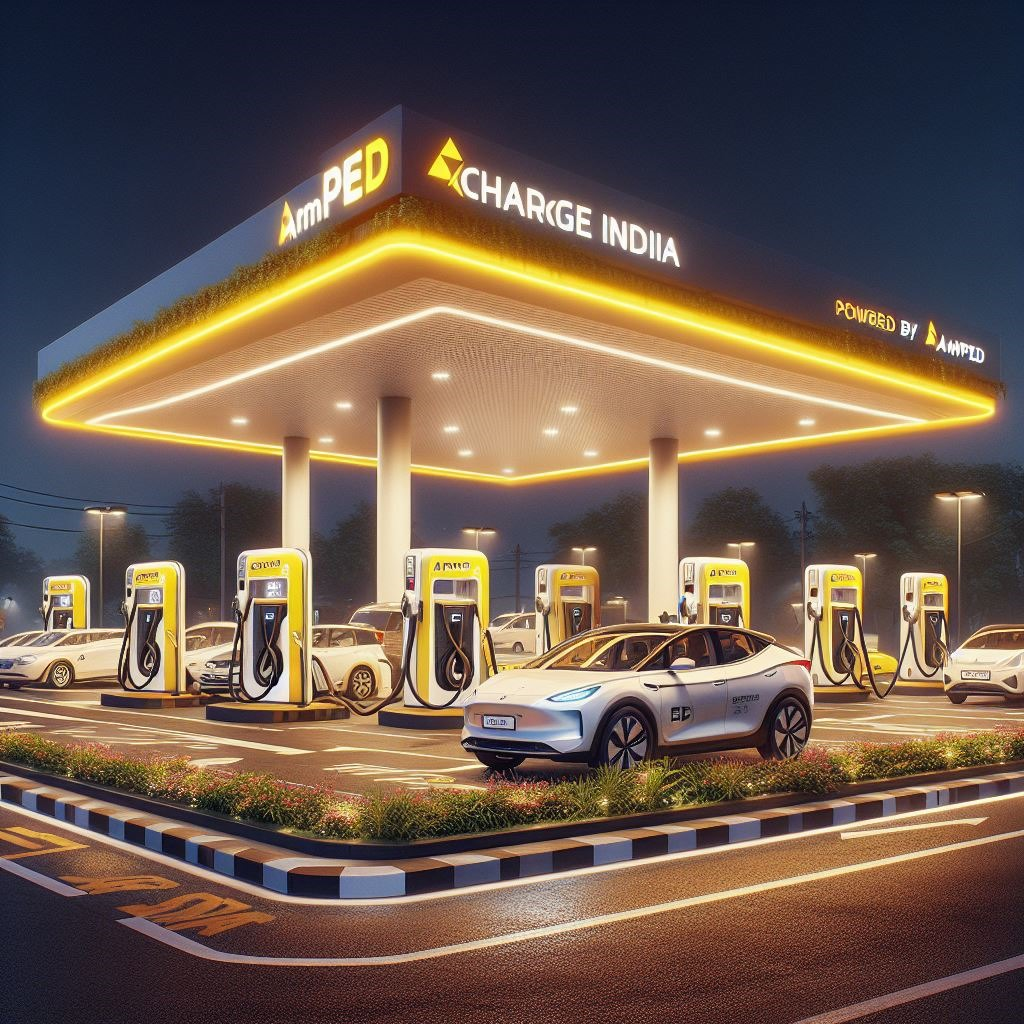
The Future of Mobility: The Growing
Introduction
Electric vehicles (EVs) are gaining popularity in India as people seek eco-friendly and cost-effective alternatives to traditional fuel-powered cars. With rising fuel prices and increasing awareness about climate change, many Indians are switching to electric vehicles. However, one of the major challenges for EV adoption is the availability of EV fast charging stations. In this article, we will explore the importance of public EV charging stations, their benefits, and how India is preparing for an electric future.

Why India Needs More EV Charging Stations
India’s automobile industry is undergoing a transformation as more manufacturers launch electric vehicles. However, for widespread EV adoption, a strong charging infrastructure is crucial. Here’s why India needs more EV fast charging stations:
1. Encouraging EV Adoption
Many potential EV buyers hesitate due to range anxiety, which is the fear of running out of battery without a nearby charging station. A well-established network of public EV charging stations can eliminate this concern, making EVs a practical choice for everyone.
2. Reducing Dependence on Fossil Fuels
India relies heavily on imported petroleum, which impacts the economy. By investing in EV fast charging stations, we can reduce our dependence on fossil fuels and move towards a cleaner, greener future.
3. Lowering Carbon Emissions
Electric vehicles produce zero tailpipe emissions, which helps in reducing air pollution. Establishing public EV charging stations can accelerate the shift to electric mobility and contribute to cleaner air in cities.
4. Supporting Government Initiatives
The Indian government is actively promoting electric mobility through initiatives like the FAME (Faster Adoption and Manufacturing of Hybrid and Electric Vehicles) scheme. Developing EV fast charging stations aligns with these efforts and ensures India meets its sustainable transportation goals.
Types of EV Charging Stations
Charging an EV is different from refueling a conventional vehicle. There are different types of charging stations based on speed and power output.
1. Slow Charging (AC Charging)
- Uses a regular 230V household socket.
- Suitable for overnight charging at home.
- Charging time: 6-8 hours.
2. Fast Charging (DC Charging)
- Provides high power output, reducing charging time significantly.
- Mostly found in public EV charging stations.
- Charging time: 30-90 minutes.
3. Ultra-Fast Charging
- Uses advanced technology for ultra-fast charging.
- Can charge an EV up to 80% in 15-20 minutes.
- Ideal for highways and commercial charging hubs.
Benefits of Public EV Charging Stations
Investing in EV fast charging stations has numerous benefits for individuals, businesses, and the environment.
1. Convenience for EV Owners
Public charging stations make it easy for EV users to charge their vehicles while traveling. This ensures a hassle-free driving experience without worrying about battery levels.
2. Boosting the Economy
The growth of EV infrastructure creates jobs in manufacturing, installation, and maintenance. This contributes to economic development and supports India’s energy transition.
3. Encouraging Sustainable Practices
Widespread availability of public EV charging stations promotes sustainable transportation, reducing carbon footprints and improving air quality.
4. Increasing Property Value
Businesses and residential areas with EV fast charging stations attract more customers and residents, leading to increased property value and demand.
Government Support for EV Charging Infrastructure
The Indian government is actively supporting EV infrastructure development through various policies and incentives:
- FAME II Scheme: Provides financial support for setting up charging stations.
- State-Level Policies: Several states offer subsidies and incentives for EV charging infrastructure.
- Public-Private Partnerships: The government collaborates with private companies to develop a robust charging network.
Challenges in Expanding EV Charging Infrastructure
While EV charging stations are essential, there are some challenges in expanding the network.
1. High Initial Investment
Setting up EV fast charging stations requires significant investment in infrastructure, including transformers, power supply, and land.
2. Grid Stability
A sudden rise in EV charging demand can put pressure on the power grid. The government needs to improve grid capacity to handle increased electricity consumption.
3. Location Accessibility
Charging stations must be strategically placed in urban areas, highways, and remote locations to serve a larger population.
4. Standardization
Different EV manufacturers use various charging standards. Ensuring compatibility across all EVs is necessary for a seamless charging experience.
Future of EV Charging Stations in India
Despite these challenges, the future of EV charging in India looks promising. Companies like Amped India are working towards expanding the network of public EV charging stations, making it easier for people to switch to electric vehicles. Some upcoming trends include:
1. Smart Charging Solutions
With advancements in IoT and AI, smart charging stations will optimize energy usage and reduce electricity costs.
2. Renewable Energy Integration
Using solar and wind energy to power EV fast charging stations will make charging more sustainable and cost-effective.
3. Wireless Charging
Future charging stations may use wireless technology, allowing vehicles to charge without cables.
4. Battery Swapping Stations
Battery swapping can provide an instant solution for EV users, reducing wait times and making EV adoption more convenient.
Conclusion
The expansion of EV fast charging stations is crucial for the success of electric vehicles in India. As more people transition to EVs, a robust charging infrastructure will ensure smooth and efficient operations. Companies like Amped India are playing a key role in building a sustainable future by providing reliable public EV charging stations across the country. Investing in EV infrastructure today will pave the way for a cleaner and greener tomorrow.






